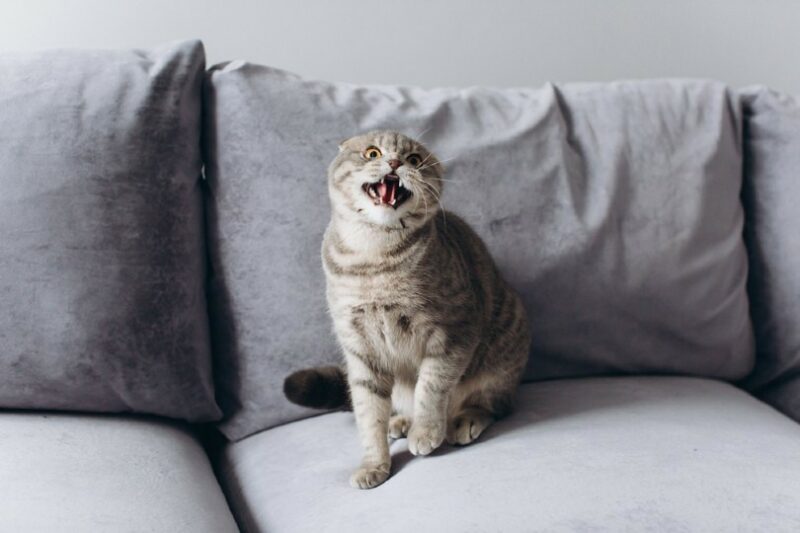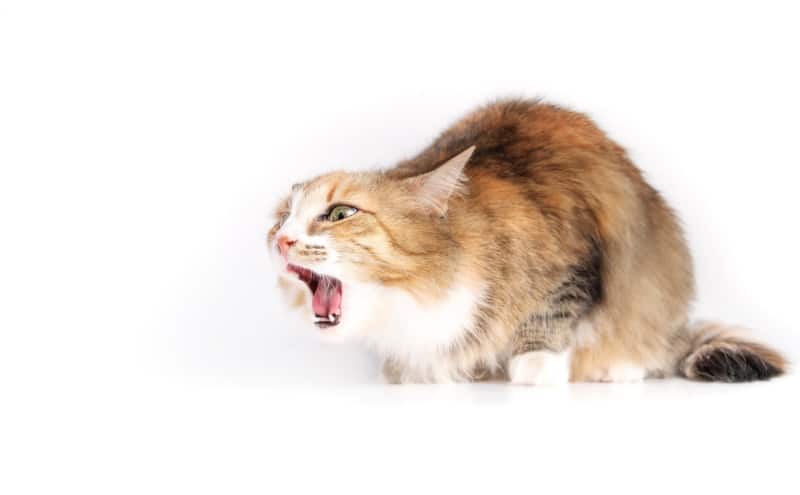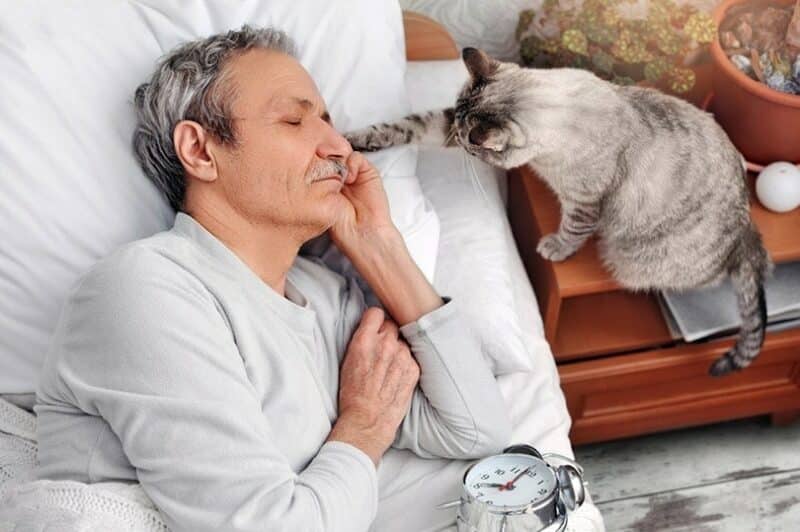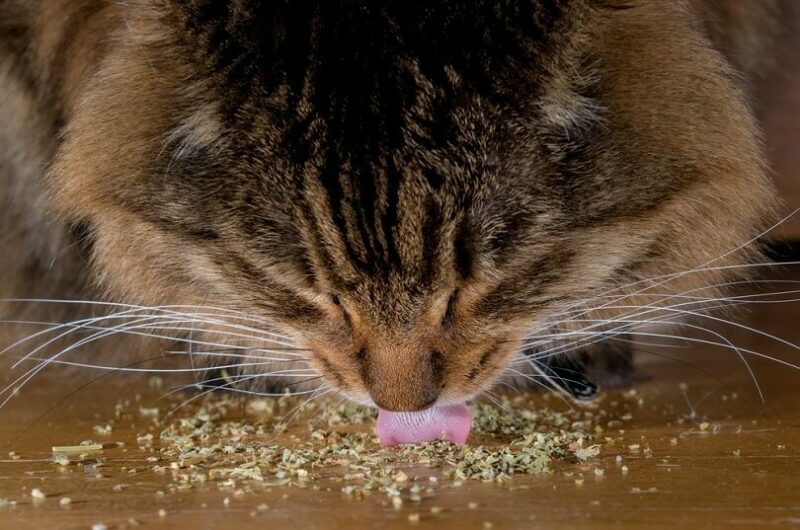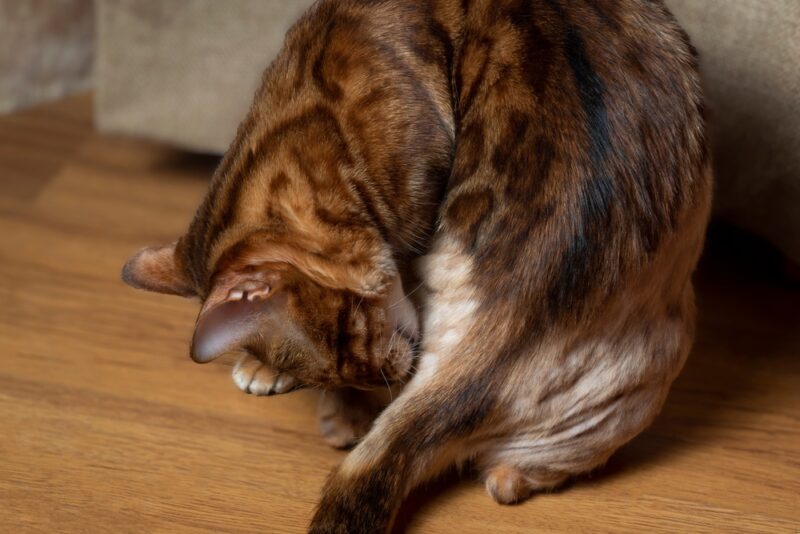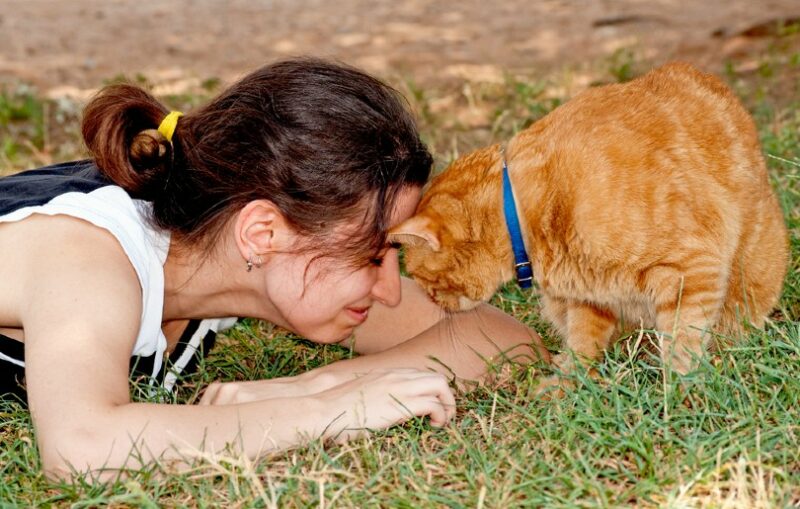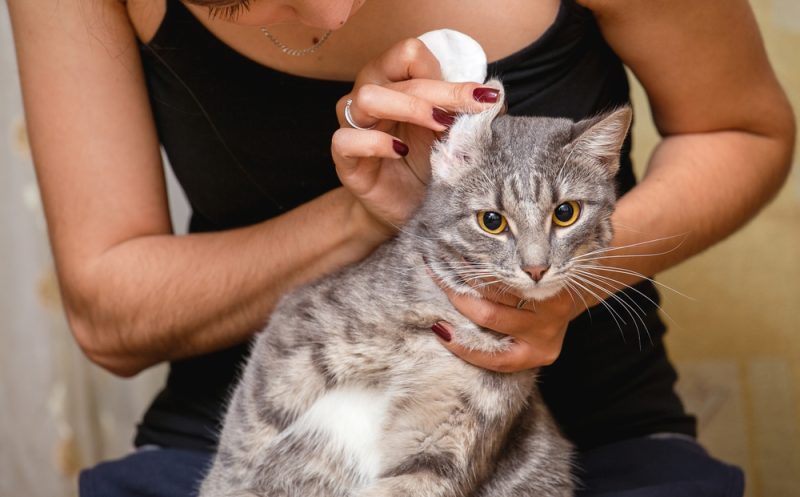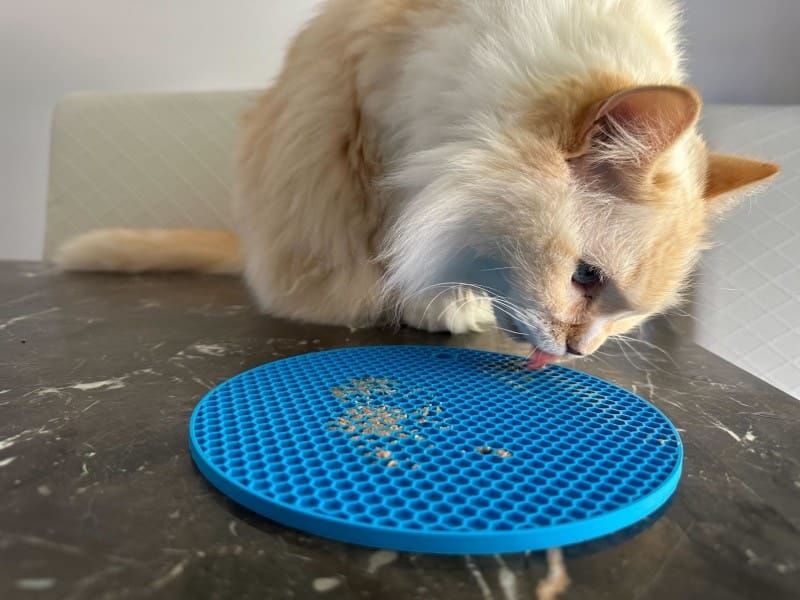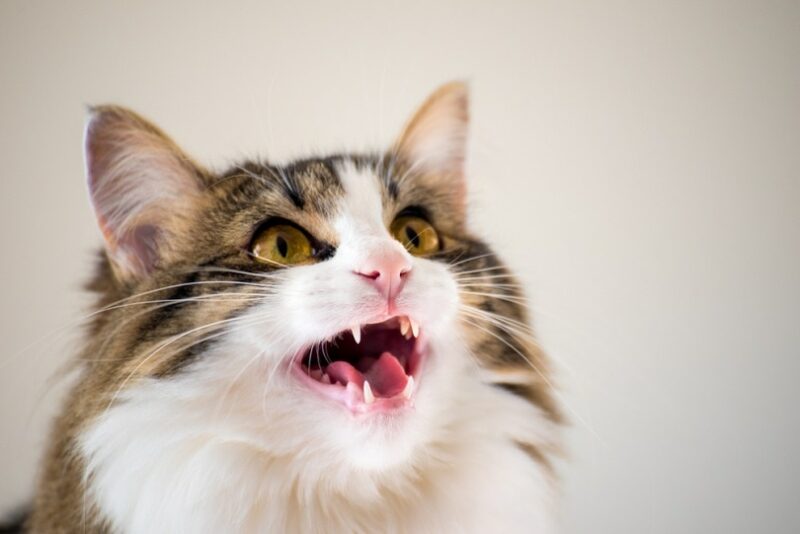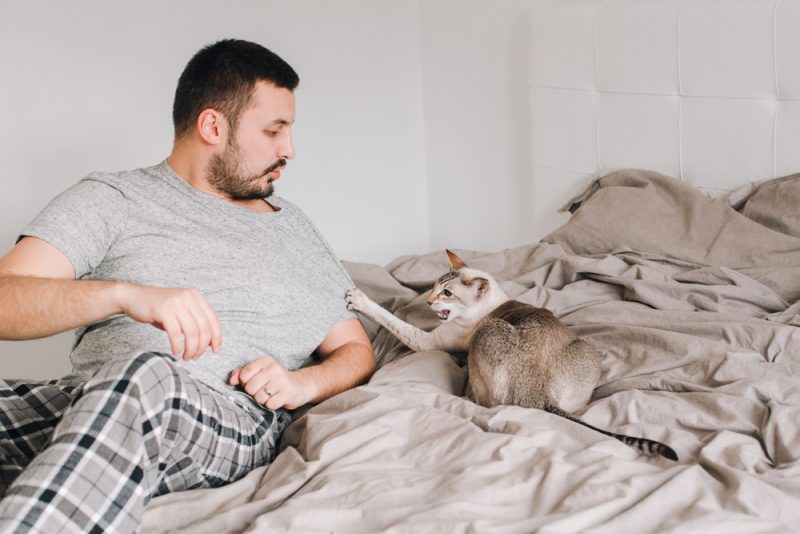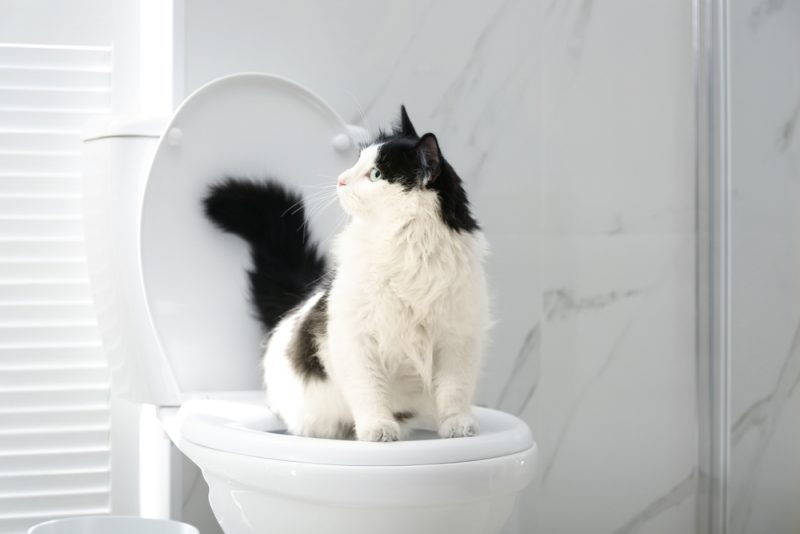It can be extremely disconcerting for your cat to suddenly begin to exhibit behavior that is unusual for them, especially if your once sweet kitty has suddenly become an aggressive monster. There are a few reasons that cats may suddenly become aggressive, from fear and stress to another intact cat nearby. It’s important to understand why your cat’s behavior has suddenly changed so you can start working to fix the problem.

Why Is My Male Cat Suddenly Aggressive?
Breeding
Male cats don’t like competition when it comes to selecting a mate, and it’s extremely common for tomcats, or intact male cats, to fight with each other for breeding rights in a certain area. When a female cat is in heat, you can expect multiple males to show up to breed with her, so there’s a likelihood that you’ll spot a few tomcat fights during this time.
Health Conditions
Pain and discomfort from health conditions can lead to aggression in normally pleasant cats. Although there are many potential causes of pain and health problems, male cats, in particular, are at a high risk for developing feline lower urinary tract disease, or FLUTD. This condition can lead to obstructions of the urinary tract, leading to an inability to urinate, extreme pain, and even bladder rupture.
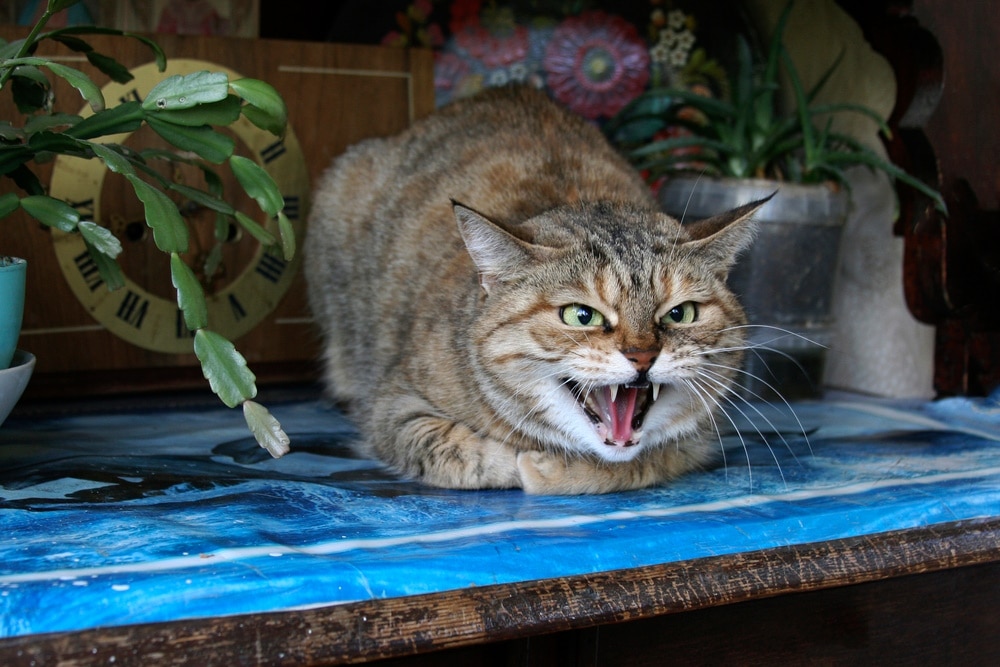
Why Is My Female Cat Suddenly Aggressive?
Breeding
The behavior of a female cat can change significantly when she is in heat. Typically, female cats will become extremely loving and attention-seeking. However, some female cats may become irritable and aggressive due to their hormonal changes. They may also show more aggression than normal to other cats, especially females.
Health Conditions
Like male cats, female cats can also express pain and discomfort through aggression. Female cats may experience infections and cancers of the reproductive system, including pyometra, mammary cancer, and ovarian cancer. These conditions may lead to changes in your cat’s hormone levels and comfort level, leading to aggressive behavior. If you notice this in your cat, you should reach out to a veterinarian for the consultation.
If you need to speak with a vet but can't get to one, head over to PangoVet. It's an online service where you can talk to a vet online and get the advice you need for your pet — all at an affordable price!


The 6 Other Causes of Sudden Aggression in Cats
1. Fear
If your cat is startled, they may respond with aggression until they process the situation and realize they’re safe. Cats that constantly live in a high-stress environment that makes them feel unsafe may become aggressive all the time. Cats should always be provided with a quiet, safe, comfortable place to get away from everyone and everything if needed.
2. Play
Some aggression in cats isn’t truly aggression at all. Playtime for cats is a way for them to hone their hunting skills, so it only stands to reason that your cat may start to play too rough, crossing over into aggressive behavior. This behavior can be remedied through positive reinforcement and aggressive, overly rough play should not be allowed since this can lead to injuries.
3. Territory
Some aggression in cats can arise when a new cat (or dog) enters their territory. This may be a new housemate that has been brought into the home, or a new outdoor cat that is coming around for visits, potentially unknown to you.
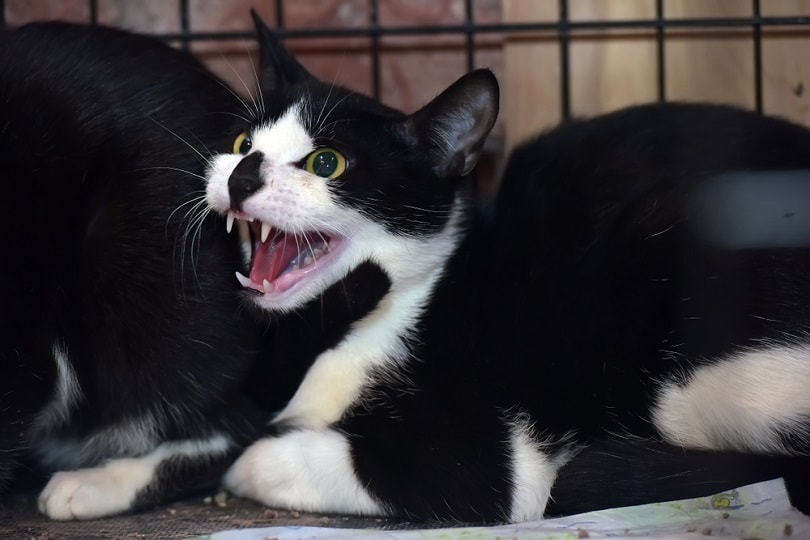
4. Redirection
When cats are frustrated, they may lash out, showing aggression toward you or other animals in the home.
5. Dominance
Cats tend to establish social hierarchies, and therefore when new additions enter their house, the social structure may change. This can lead to aggression, as the new social rankings are established.
6. Petting
We’ve all likely experienced that odd behavior where a cat will seem to be asking to be petted, but once you do it, they bite and scratch. Why do cats do this? In all honesty, nobody really knows exactly why. It’s possible that they become overstimulated by too much touch, or maybe they simply want to be near you without being petted. Either way, it’s important to avoid touching your cat when they seem agitated. Reward them with tasty treats when they allow you to pet them without incident.

In Conclusion
Approximately 8% of animals surrendered to animal shelters in the US were surrendered due to aggression. Many of the causes of aggression in cats are manageable, but they do take time and effort to work through. If you don’t want your cat to become a statistic, make sure to focus on positive reinforcement of good behavior while discouraging aggression and other undesirable behaviors.
Also see:
Featured Image Credit: Anatoliy Cherkas, Shutterstock
